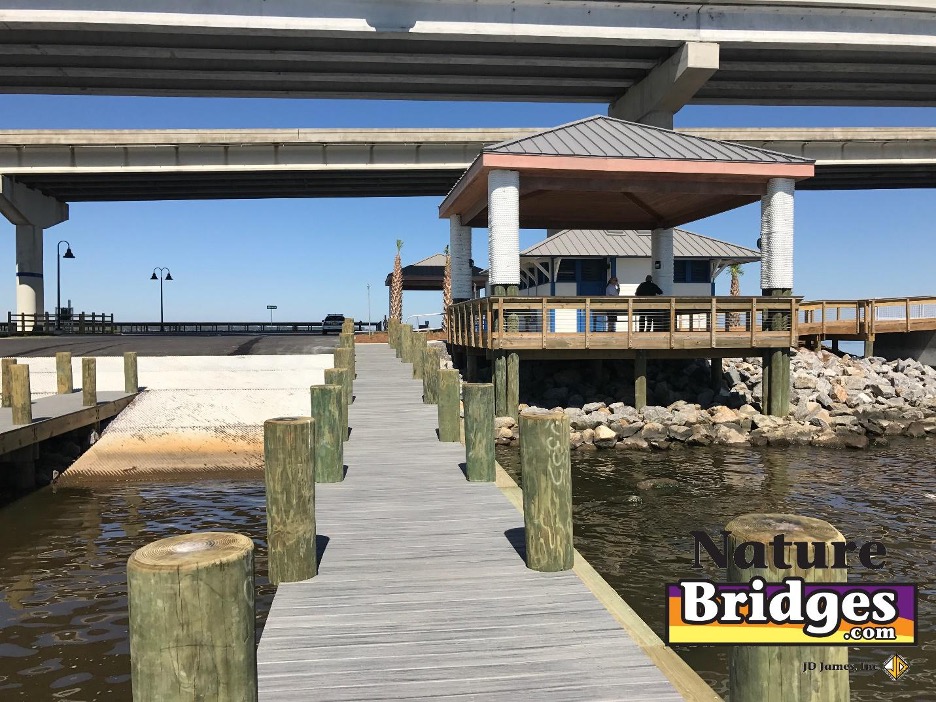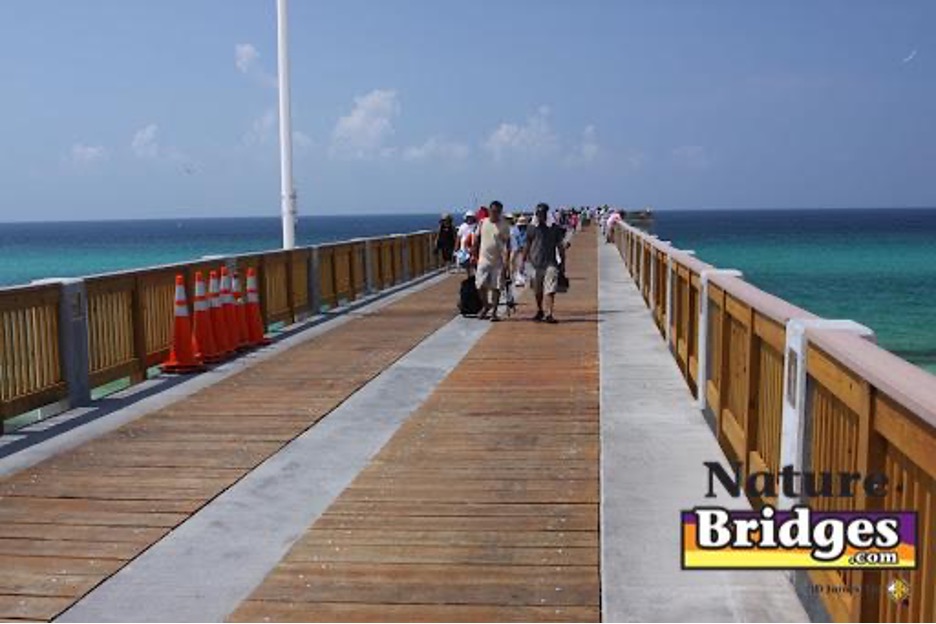
Many people love being on or around water, and for good reason. The views are often beautiful, and there is almost always plentiful underwater wildlife to watch. On a hot day, being in the water or just feeling the cool ocean breeze is refreshing. One of the best ways to enjoy the water is on a pier, where you can fish, observe, or even jump into the water.
One thing some people overlook when planning a pier, however, is the best materials to use for building. Whether you use wood, a composite, concrete – or a combination – there are pros and cons for each. Your pier construction crew can ensure that each of these looks amazing and can help you maintain it for optimal durability, but we can also help you choose the right one for your pier.
Wood Piers

Piers constructed of primarily wood are durable and look the most natural in most environments. Because it’s a renewable resource, it’s often one of the top choices for piers. Many smaller piers and other walkways are built using wood because of its durability, availability, and how it blends with various environments.
There is a downside to wood, however. Wood needs to be maintained often. Pressure-treated boards are often treated with chemicals that can leach out over time. This can cause a slippery surface. Painting or sealing the boards creates resistance. If you choose wood for your pier, make sure you reapply sealant as recommended.
Concrete Piers
Concrete is another popular construction material for piers. It offers a modern look and is one of the strongest materials available. Research after hurricanes shows that concrete piles and other supports sustain less damage in high winds. Even when your pier constructor builds the deck – or walking surface – with wood, we often use concrete for the foundation because of the strength of the material.
Concrete can be easily poured into a mold, so it can be used for almost any pier design. It is, however, heavier than either wood or composite, so it’s not always transported as easily as lighter wood or composite. Because of concrete’s texture, it is less likely to become slippery and requires less maintenance than wood.
Composite Piers
Composite materials require less maintenance than wood. While composite isn’t as strong as concrete, it is stronger than wood in many ways. Wood is more likely to rot when exposed to water constantly without proper maintenance. However, composite decking is oil-based, and that oil becomes slippery when mixed with water. For that reason, many pier construction companies do not usually recommend composite for piers or other structures that are built on water.
If you still aren’t sure what type of building materials you want to use for your new pier, boardwalk, or other pedestrian walkway, Nature Bridges can help. With our experienced planning and design team, we can help you choose the best material and the best way to build your new pier. Our goal is that you are happy with your new structure now and for years to come. You can give us a call to discuss your options, or check out our website at www.naturebridges.com and fill out a contact form. We look forward to hearing from you!


P.O. Box 516
Monticello, FL 32345
Phone: (850) 997-8585 Fax: (850) 385-3493
estimating@naturebridges.com